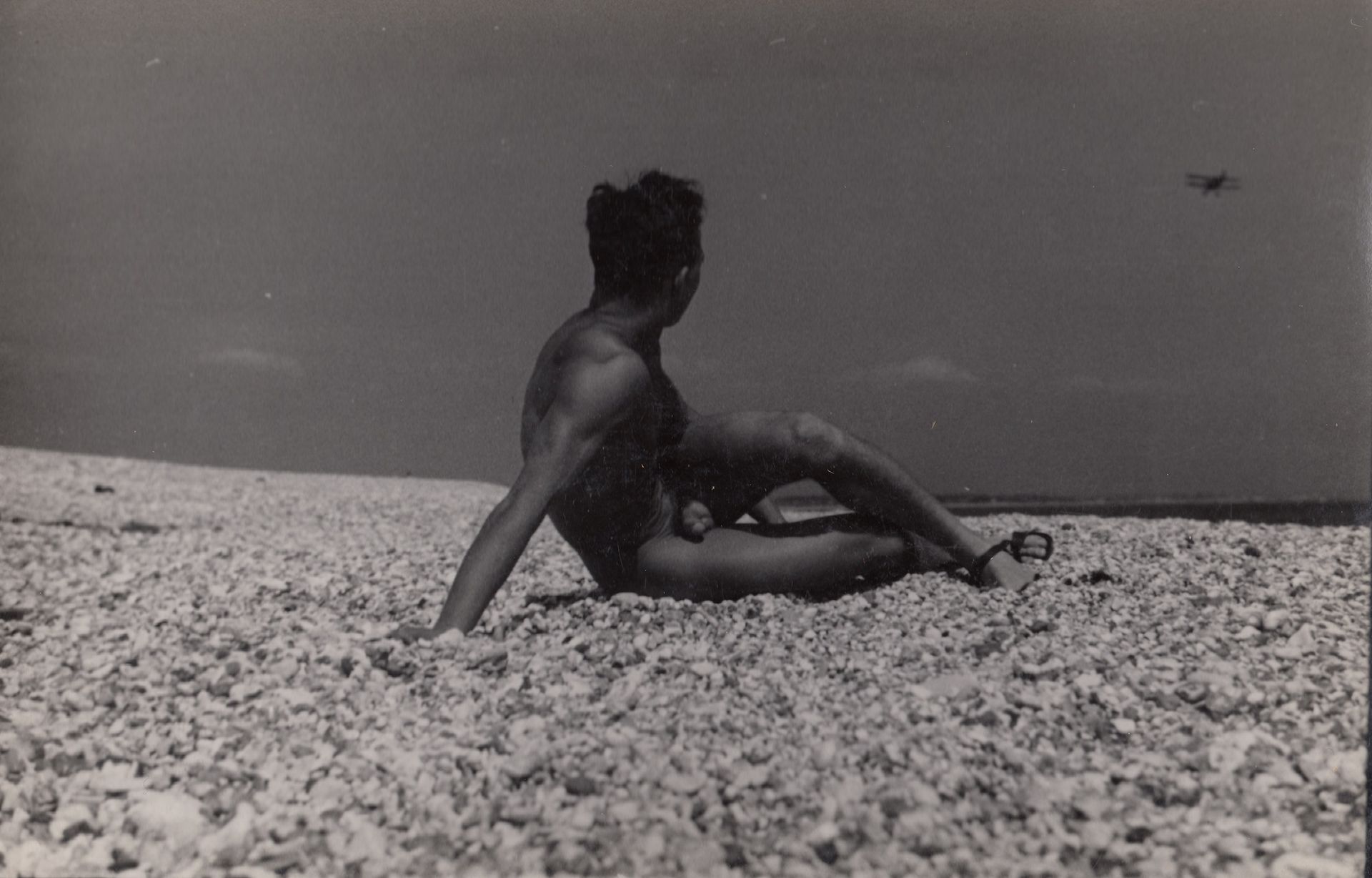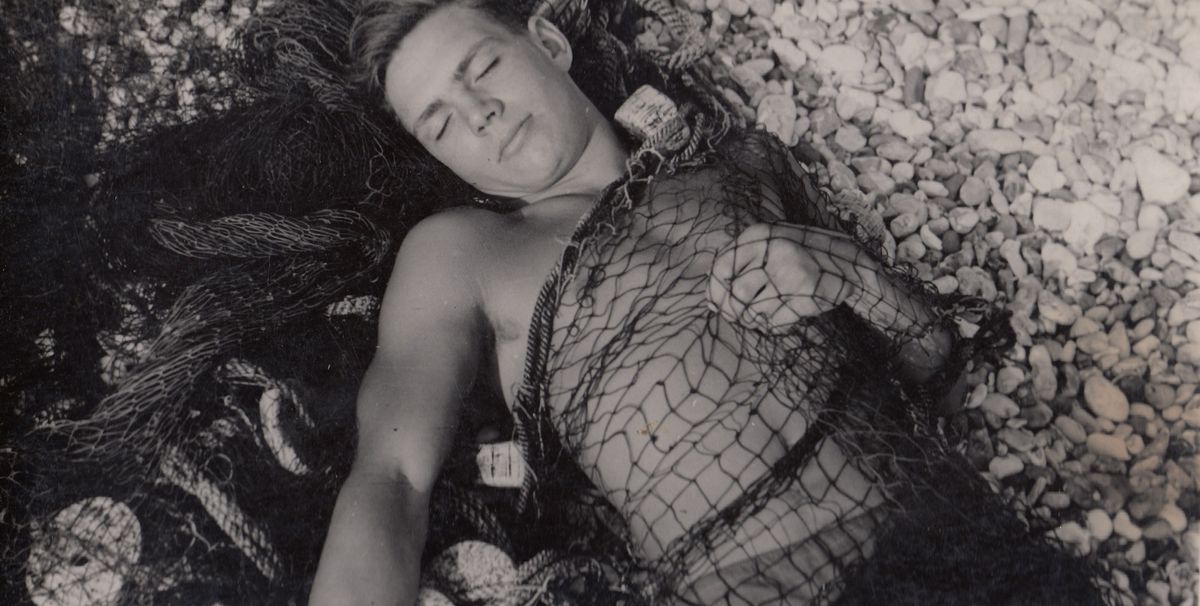The London gallery Austin Desmond Fine Art has uncovered a group of early photographs and collages by the British artist Keith Vaughan. These experimental images chronicle the summer trips that Vaughan and a close group of male friends made to Pagham Beach in West Sussex in the late 1930s, on the cusp of the Second World War. Previously thought lost, the majority have never previously been shown publicly but will be exhibited for the first time at Austin Desmond from 25 October to 8 December. Thought to have been taken in 1939, the photographs depict a carefree group of young men, often naked or near naked and lying languorously on the beach or in idealised athletic poses, along with tender studio portraits.
As gay men in a time when homosexuality was still illegal, Vaughan and his friends lived dual lives, of secrecy and, arguably, repression. Yet these photographs, kept for decades in boxes, are unguarded, playful, often hauntingly beautiful. Their revelation is timely; 2017 marks the 50th anniversary of the passing of the 1967 Sexual Offenses Act, which legalised homosexuality, and Vaughan’s later work is also included in the Tate Britain’s current show, Queer British Art 1861-1967. After buying his first camera, in 1932 Vaughan set up a darkroom in his family home in Hampstead where he could experiment with developing such risqué images of the male nude, which might have raised suspicion if taken into a high-street processing shop. It is not known conclusively whether these were original prints by Vaughan himself, but as many are inscribed on the back in the artist’s hand with his name and address, it seems likely.

The group is being sold by the great-nephew of Tracy Stamp (formerly Bernard), presumed to be an acquaintance of Vaughan’s. Stamp moved in the same bohemian Soho circle as Francis Bacon and, in 1952, was the second person in Britain to have a sex change. At the collection’s core are nearly 90 post-card sized photographs, found in a small cardboard box hand-painted by Vaughan and labelled ‘Pagham’. Alongside these are around 20 large format photographs and a group of double-sided collages, using cut-out photographs against ink and gouache backdrops of seaside idylls. Infused with Bauhaus and Surrealist influences, the stylish graphic character of these collages reflects Vaughan’s then job as a designer at Unilever’s advertising agency, Lintas, which he left at the age of 27 to become a full-time artist.
Some of the photographs bear prices on the verso, but Vaughan never sold them, instead drawing from them repeatedly as source material for his paintings and drawings. “They have this feeling of joy about them, these young men are having the time of their lives”, David Archer, the gallery director, says. “But war kicked off so soon after, it is as though they knew what was coming.” Vaughan’s brother, Dick, is depicted in several images. A year later, he was shot down while serving in the RAF and, in around 1940, Vaughan produced Dick’s Book of Photographs as a tribute.
Austin Desmond held its first show of Vaughan’s work in 1987. “He has got more expensive and harder to buy, so we have only held five exhibitions, but we have always maintained an interest”, Archer says. “I have always been aware of these photographs being a real mystery, actually being missing.” He thinks the present group may be part of an unknown third album of Pagham photos, taken between the Highgate Ponds Album in 1933 and Dick’s Book of Photographs. However, unconvinced this is the Pagham Beach Album in its entirety, Archer has decided to sell the works individually, priced between £800 for the smaller photographs and £20,000 for a collage.
• Keith Vaughan: On Pagham Beach, Photographs and Collages from the 1930s, Austin Desmond Fine Art, London, 25 October-8 December.
UPDATE: The images in the original version of this article were replaced with higher resolution ones on 4 August


